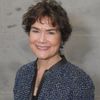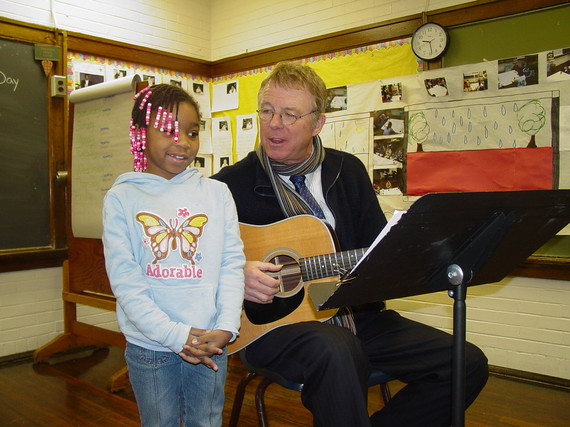In 1987 referring to the Berlin wall, President Ronald Regan challenged Mikhail Gorbachev to "tear down this wall."
Almost 30 years later, walls are again a hot topic. Only today some think the more impenetrable, the better. Walls designed to keep out people who may be a different class, age and race.
At Monday's White House Conference on Aging (WHCoA), Fernando Torres-Gil articulated a different vision for walls. When speaking on a panel about the power of intergenerational connections he said it's time we tear down walls -- walls that separate generations.
Walls erected by single-age policies and programs resulting in housing and facilities that were created with the hope no generation would be left behind -- but having the opposite effect.
Walls that increasingly separate our young people of color from their older, white counterparts.
While the 2015 WHCoA focused on a rapidly aging society, only Dr. Torres-Gil, who served as the country's first Assistant Secretary for Aging, connected our changing age AND race demographics.
Duo changing demographics which if embraced can and should be our country's greatest asset.
Today, more than half of Americans under the age of five are people of color compared to less than one in five Americans over 65.
They often live their lives on opposite sides of the wall, seldom seeing or interacting with each other and exacerbating the growing race and age gap.
It's time to tear down these age-segregated walls and rebuild the bridges -- the social compact -- that made our country economically viable and strong.
Unlike many other developed countries, our young population will continue to grow for decades to come. They will replenish our workforce, through their taxes contribute to our social safety net, and -- with proper investments -- they will propel our economy and country forward.
At the same time, the increase in a healthier, longer living older population represents an untapped human capital asset, a wealth of knowledge and experience that our country and communities can and should engage.
John Legend and Common were so right when they wrote in their award winning song Glory, "No one can win the war individually. It takes the wisdom of the elders and young people's energy."
Fortunately we have the demographics to enable young and old to work together to "win the war." Unfortunately as a country we are doing very little to leverage this asset and ensure the compact between generations remains strong.
Here are three simple ideas to get us started.
• Incentivize cities and towns to build or refurbish intergenerational centers rather than senior, teen and childcare centers. Resources are better used when they connect generations instead of separating them.
• Establish a community intergenerational advisory council led by co-chairs representing two distinct generations and charge them with making recommendations for intergenerational solutions to issues and opportunities.
• Use an intergenerational lens when drafting public policies. For example, provide student debt reduction for those providing services to help older adults age in place in their own homes.
Those who were fortunate enough to attend the WHCoA or take part in one of the over 600 watch parties heard the call to action issued at the end of the day.
In closing the conference, U.S. Department of Labor Secretary Tom Perez said America works better when we have a full team.
A full team that doesn't leave any generation on the side-lines.
As we look back on the impact of the 2015 White House Conference on Aging, let's be sure America's team includes all generations, diverse, unique and beautiful.
The question remains --are we ready to tear down the wall of age segregation and integrate the way we live our lives?
Our 2024 Coverage Needs You
It's Another Trump-Biden Showdown — And We Need Your Help
The Future Of Democracy Is At Stake
Our 2024 Coverage Needs You
Your Loyalty Means The World To Us
As Americans head to the polls in 2024, the very future of our country is at stake. At HuffPost, we believe that a free press is critical to creating well-informed voters. That's why our journalism is free for everyone, even though other newsrooms retreat behind expensive paywalls.
Our journalists will continue to cover the twists and turns during this historic presidential election. With your help, we'll bring you hard-hitting investigations, well-researched analysis and timely takes you can't find elsewhere. Reporting in this current political climate is a responsibility we do not take lightly, and we thank you for your support.
Contribute as little as $2 to keep our news free for all.
Can't afford to donate? Support HuffPost by creating a free account and log in while you read.
The 2024 election is heating up, and women's rights, health care, voting rights, and the very future of democracy are all at stake. Donald Trump will face Joe Biden in the most consequential vote of our time. And HuffPost will be there, covering every twist and turn. America's future hangs in the balance. Would you consider contributing to support our journalism and keep it free for all during this critical season?
HuffPost believes news should be accessible to everyone, regardless of their ability to pay for it. We rely on readers like you to help fund our work. Any contribution you can make — even as little as $2 — goes directly toward supporting the impactful journalism that we will continue to produce this year. Thank you for being part of our story.
Can't afford to donate? Support HuffPost by creating a free account and log in while you read.
It's official: Donald Trump will face Joe Biden this fall in the presidential election. As we face the most consequential presidential election of our time, HuffPost is committed to bringing you up-to-date, accurate news about the 2024 race. While other outlets have retreated behind paywalls, you can trust our news will stay free.
But we can't do it without your help. Reader funding is one of the key ways we support our newsroom. Would you consider making a donation to help fund our news during this critical time? Your contributions are vital to supporting a free press.
Contribute as little as $2 to keep our journalism free and accessible to all.
Can't afford to donate? Support HuffPost by creating a free account and log in while you read.
As Americans head to the polls in 2024, the very future of our country is at stake. At HuffPost, we believe that a free press is critical to creating well-informed voters. That's why our journalism is free for everyone, even though other newsrooms retreat behind expensive paywalls.
Our journalists will continue to cover the twists and turns during this historic presidential election. With your help, we'll bring you hard-hitting investigations, well-researched analysis and timely takes you can't find elsewhere. Reporting in this current political climate is a responsibility we do not take lightly, and we thank you for your support.
Contribute as little as $2 to keep our news free for all.
Can't afford to donate? Support HuffPost by creating a free account and log in while you read.
Dear HuffPost Reader
Thank you for your past contribution to HuffPost. We are sincerely grateful for readers like you who help us ensure that we can keep our journalism free for everyone.
The stakes are high this year, and our 2024 coverage could use continued support. Would you consider becoming a regular HuffPost contributor?
Dear HuffPost Reader
Thank you for your past contribution to HuffPost. We are sincerely grateful for readers like you who help us ensure that we can keep our journalism free for everyone.
The stakes are high this year, and our 2024 coverage could use continued support. If circumstances have changed since you last contributed, we hope you'll consider contributing to HuffPost once more.
Already contributed? Log in to hide these messages.

